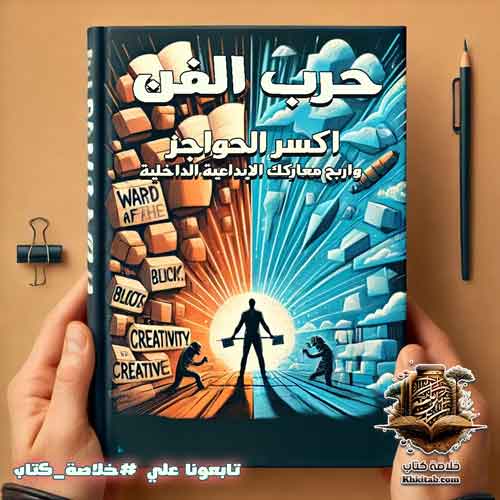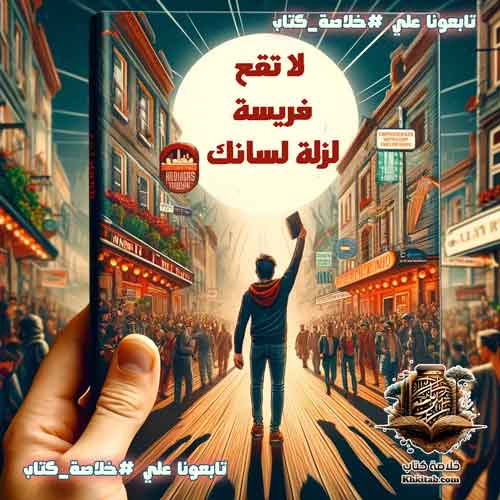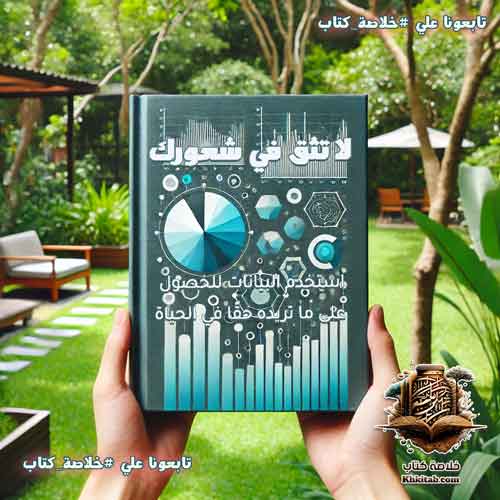Getting Things Done: The Art of Stress-Free Productivity

In an increasingly demanding world, where pressure mounts day by day, the quest for methods to enhance productivity without feeling burnt out remains persistent. This is where David Allen’s book, “Getting Things Done: The Art of Stress-Free Productivity,” comes into play.
This book is not merely a managerial guide to organizing matters; rather, it presents a holistic life system that aids individuals in making the most of their time without feeling overwhelmed. Throughout its pages, Allen introduces his renowned system, honed over the years, proven to assist people in managing both their personal and professional lives.
The book initiates by illuminating the reasons why many of us feel stressed and strained, even when we are actively working and putting in the effort. From this point, Allen delivers his insights on how to eradicate feelings of exhaustion and pressure by employing his distinct system.
At its core, the book emphasizes the concept of “clearing the mind” of lingering tasks and unfinished business by externalizing them in tools outside of one’s mental space. When liberated from the necessity to remember everything, we become more capable of focusing and making the right decisions.
إقرأ أيضا:التكيف والنجاح في عالم التسويق الدوليWhile it may seem primarily targeted at professionals and business individuals, the GTD system is versatile enough for all walks of life. Whether you’re a student, a stay-at-home parent, or an executive in a large corporation, the techniques and strategies presented in this book will aid you in achieving productivity without the continuous sensation of stress.
How Can the GTD Philosophy Enhance Stress-Free Productivity?
In today’s fast-paced world, individuals often grapple with managing their tasks, leading to undue stress and reduced efficiency. David Allen’s acclaimed book, “Getting Things Done: The Art of Stress-Free Productivity,” introduces a transformative approach to handling tasks, aptly named the GTD Philosophy.
The GTD (Getting Things Done) Philosophy isn’t merely about task management; it’s a holistic approach aimed at decluttering one’s mind to achieve peak productivity. At the core of this philosophy is the belief that a clear mind – one free from the clutter of to-dos and commitments – can think better, act more decisively, and ultimately produce work of higher value. When our minds are constantly preoccupied with remembering tasks or commitments, it becomes a challenge to focus on the present and engage deeply with our work.
Allen underscores the significance of externalizing tasks and commitments. Instead of keeping things in the mind – which can lead to feelings of overwhelm – one should use tools, systems, or methods to capture every commitment, big or small. By doing so, not only does one free mental space, but there’s also an opportunity to view tasks objectively, prioritize them, and handle them systematically.
Moreover, the GTD Philosophy highlights the importance of recognizing the distinction between actionable tasks and mere information. This distinction allows for better task categorization and leads to more efficient execution. For instance, an actionable task might be “Call John about the meeting,” while mere information might be “John’s birthday is next week.”
In essence, the GTD Philosophy as introduced in “Getting Things Done: The Art of Stress-Free Productivity” is a game-changer for anyone looking to elevate their productivity levels. By externalizing tasks, focusing on the present, and systematically handling commitments, one can navigate their professional and personal life with enhanced clarity, reduced stress, and higher efficiency.
Self-development – Book Summary (khkitab.com)
Why is Capturing Everything Essential in ‘Getting Things Done: The Art of Stress-Free Productivity’?
The principle of “Capture Everything” is a cornerstone in David Allen’s book, “Getting Things Done: The Art of Stress-Free Productivity.” It is designed to aid individuals in navigating through their bustling lives, marked by an endless list of tasks and commitments that often lead to overwhelm and stress.
“Capture Everything” is not just a task-listing exercise; it’s a fundamental shift in how you approach tasks, ideas, and commitments. Allen emphasizes the importance of externalizing thoughts and tasks from your mind into a reliable system, creating mental clarity and focus. When tasks are captured in an external system, the mind is relieved of the constant effort to remember everything, allowing for more creative and strategic thinking.
The act of capturing involves collecting everything that catches your attention. Be it a fleeting idea, a to-do, or a significant commitment, nothing is too small or too big to be captured. By noting down every thought and task, you ensure that nothing gets lost in the hustle and bustle of daily life, providing a sense of control and calmness.
This approach fosters a proactive mindset, as you are not merely responding to tasks as they appear but systematically capturing and organizing them. This systematic capture method leads to an environment where tasks are identified, recorded, and then executed at the appropriate time, leading to a more productive and stress-free life.
Allen recommends using tools that suit your personal preferences and work habits for capturing. These tools could range from traditional note-taking apps to sophisticated task management software. The key is to select a tool that you are comfortable with and are likely to use consistently.
In essence, the “Capture Everything” principle in “Getting Things Done: The Art of Stress-Free Productivity” offers an insightful perspective into efficient task management. It is not merely about jotting down tasks but about creating a trusted system that allows your mind to focus on the present task without the anxiety of forgetting something important. By externalizing tasks, you create a roadmap for your day, week, or even life, leading to increased productivity and a significant reduction in stress.
Our Facebook Page – Book Summary
How Does ‘Getting Things Done: The Art of Stress-Free Productivity’ Highlight the Importance of Clarifying Tasks?
“Getting Things Done: The Art of Stress-Free Productivity” by David Allen delves deeply into the nuances of productivity, with a significant emphasis on the need to clarify tasks. But what does it mean to clarify tasks, and why is it so fundamental to stress-free productivity?
At the heart of Allen’s approach is the principle that ambiguity is a prime source of stress and inefficiency. When tasks are vague, our mind tends to circulate around them, trying to figure out what precisely needs to be done, often leading to procrastination or inaction.
The process of clarifying tasks, as elaborated in the book, involves identifying the next actionable step for every item. This method encourages the individual to break down tasks into digestible, clear actions. For instance, rather than having a task labeled “Plan trip,” a clarified task would be “Research flight prices to Paris for spring vacation.” This specificity provides a clear direction and reduces the mental effort required to initiate the task.
Furthermore, Allen emphasizes the importance of distinguishing between tasks and projects. While a task is a single actionable item, a project comprises multiple tasks. Recognizing this difference is crucial because approaching a project as if it’s a simple task can be overwhelming. By breaking down a project into its constituent tasks, you can tackle each step one at a time, making the entire endeavor more manageable.
In essence, the act of clarifying tasks, as championed in “Getting Things Done: The Art of Stress-Free Productivity,” is more than just about organization; it’s about creating a mental environment where ambiguity is reduced, actions are evident, and progress becomes a natural outcome. By consistently determining the next actionable step and distinguishing between tasks and projects, individuals can streamline their workflow and approach their day with a heightened sense of purpose and clarity.
How Does ‘Getting Things Done: The Art of Stress-Free Productivity’ Emphasize Organizing Tasks by Context?
One of the revolutionary elements David Allen introduces in his book, “Getting Things Done: The Art of Stress-Free Productivity,” is the concept of organizing tasks by context. But what does it mean to organize tasks by context, and how can it reshape the way we approach our to-do lists?
In traditional task management, tasks are typically listed without a specific consideration for where or with what tools they can be accomplished. However, Allen argues that our efficiency increases dramatically when we group tasks based on the context in which they can be done. Essentially, by organizing tasks under labels such as @phone, @computer, or @office, we align our tasks with the tools or environments required for their completion.
For instance, if you have multiple tasks that require a phone, it’s more efficient to do all of those tasks consecutively while you’re at your phone, rather than sporadically throughout the day. Similarly, tasks tagged with @computer should be tackled when you’re already seated and ready at your workstation. This method reduces the mental load of constantly switching between tasks, tools, and environments.
Furthermore, organizing by context can be especially beneficial in today’s world, where multitasking has become the norm, often reducing our overall productivity. When tasks are categorized by their context, it streamlines our workflow by minimizing distractions and keeping us focused on a specific type of task. Instead of jumping between unrelated tasks, we can flow through tasks that share a context, maximizing our efficiency.
Moreover, this strategy also aids in optimizing moments of downtime. For example, if you’re waiting for an appointment and have a list of @phone tasks, you can efficiently utilize that waiting time.
In conclusion, David Allen’s approach to organizing by context in “Getting Things Done: The Art of Stress-Free Productivity” is not just a method but a mindset. It’s a strategy that, when implemented, can bring order to chaos, clarity to confusion, and, most importantly, boost productivity by ensuring that we are always working in the right context.
Why is the Two-Minute Rule in ‘Getting Things Done: The Art of Stress-Free Productivity’ a Game-Changer for Productivity?
In David Allen’s “Getting Things Done: The Art of Stress-Free Productivity”, many principles and guidelines are presented to enhance personal and professional productivity. One such principle, which has since garnered a great deal of attention and adoption, is the “Two-Minute Rule”. But what exactly is this rule, and how does it drastically alter our approach to managing tasks?
The concept behind the Two-Minute Rule is simple yet impactful: If you determine a task can be completed in two minutes or less, then it should be done immediately, without delay. This approach seeks to eliminate procrastination by addressing quick tasks head-on, preventing them from piling up and becoming daunting.
One of the biggest advantages of implementing the Two-Minute Rule is the immediate sense of accomplishment. Completing a task, however small, provides a psychological boost, fostering motivation and momentum to tackle larger tasks. By immediately handling these small tasks, you clear mental and physical clutter, allowing you to focus more effectively on bigger projects.
Furthermore, in the realm of productivity, it’s well-understood that tasks, when left unattended, can multiply or escalate in complexity. A simple email that could have been responded to instantly can turn into a chain of communications if not addressed in time. The Two-Minute Rule assists in nipping such potential complications in the bud.
Also, from a time-management perspective, continuously applying this rule means fewer tasks to schedule, fewer items populating to-do lists, and less mental energy expended on trivial decisions about when or how to handle minor tasks. It’s a rule that essentially acts as a filter, sieving out tasks that can be rapidly dealt with, leaving more time for those tasks that require deeper concentration and effort.
In essence, the Two-Minute Rule, as outlined in “Getting Things Done: The Art of Stress-Free Productivity”, is not just about speed but about efficiency, clarity, and momentum. By addressing tasks that can be handled quickly, we free ourselves from the weight of accumulating minor obligations and pave the way for increased focus, clarity, and overall productivity.
How Does ‘Getting Things Done: The Art of Stress-Free Productivity’ Transform Project Planning into Actionable Steps?
In the realm of productivity, tackling large-scale projects can often be daunting, leading to procrastination and inefficiency. In David Allen’s seminal work, “Getting Things Done: The Art of Stress-Free Productivity,” he introduces a methodical approach to project planning that seeks to alleviate this overwhelm by breaking projects down into actionable steps, focusing on desired outcomes.
At the core of Allen’s approach to project planning is the recognition that every project, regardless of its size, can be distilled into a series of actionable tasks. Instead of viewing a project as a monolithic entity, Allen advocates for dissecting it into its component tasks. This deconstruction helps in visualizing the path to the project’s completion, thereby reducing the feeling of being overwhelmed.
However, Allen doesn’t just stop at breaking down tasks. He emphasizes the importance of beginning with the end in mind. By envisioning the desired outcome of a project, it becomes easier to determine the necessary steps to reach that goal. This forward-thinking approach ensures that every action taken is purposeful and aligns with the overall objective of the project.
Another pivotal point in Allen’s methodology is the “Next Action” principle. For every project, it’s essential to determine the immediate next action required to move the project forward. By focusing on this next action, individuals can maintain momentum and ensure consistent progress, sidestepping the paralysis that often comes from not knowing where to start.
Furthermore, Allen stresses the importance of regular reviews. By periodically revisiting projects and their associated tasks, individuals can assess progress, adjust priorities, and reaffirm their commitment to the desired outcome. This iterative process helps in keeping the project on track and in sync with evolving circumstances or goals.
In essence, “Getting Things Done: The Art of Stress-Free Productivity” offers a paradigm shift in how we view and approach project planning. Instead of being overwhelmed by the magnitude of a project, Allen’s methodology equips individuals with the tools and mindset to dissect projects, focus on outcomes, and consistently move forward with clear, actionable steps. This transformative approach ensures that large projects are no longer daunting but are instead a series of manageable tasks leading to a successful conclusion.
How Do Regular Reviews in ‘Getting Things Done: The Art of Stress-Free Productivity’ Ensure a Current and Relevant System?
David Allen’s “Getting Things Done: The Art of Stress-Free Productivity” doesn’t merely advocate for a set-it-and-forget-it methodology. Instead, it emphasizes the dynamism and constant evolution of our tasks and commitments. One of the core tenets of this system is the concept of Regular Reviews, specifically weekly reviews. But why are these reviews integral, and how do they fortify the GTD system’s relevance and currency?
At the heart of the Regular Reviews is the recognition that our priorities, tasks, and commitments are not static. They change, evolve, and sometimes even become obsolete as circumstances, both personal and professional, shift. A task that seemed crucial a week ago might no longer hold the same weight today. Conversely, new urgencies might emerge that were not on the radar a few days back.
The weekly review serves as a recalibration session. It’s a designated time to take stock of what has been accomplished, what’s pending, and what might have slipped through the cracks. This review isn’t just about ticking off completed tasks. It’s about realigning oneself with one’s goals, ensuring that the actions undertaken resonate with broader objectives and commitments.
Additionally, the act of reviewing tasks and projects on a weekly basis serves as a buffer against overwhelm. By consistently sifting through the system, we can spot potential bottlenecks, prioritize pressing tasks, and allocate resources more effectively. This proactive approach prevents the system from becoming cluttered and ensures that action items remain relevant.
Another critical aspect of the weekly review in the GTD method is the space it provides for reflection. In our fast-paced lives, it’s easy to get caught in the grind, continuously moving from one task to another. The review process allows for a pause, a moment to ask: “Are these tasks driving me towards my goals? Are there things I’m neglecting that are crucial to my progress?”
In conclusion, Regular Reviews, as presented in “Getting Things Done: The Art of Stress-Free Productivity”, are not just a maintenance tool but a strategic instrument. They ensure that the GTD system remains a live, breathing entity, continually updated to reflect the ever-changing landscape of our commitments and aspirations. Without these reviews, the system would risk becoming stagnant, potentially leading to decreased efficiency and relevance. The weekly review is, thus, the heartbeat of the GTD system, ensuring it remains current, focused, and purpose-driven.
How Does ‘Getting Things Done: The Art of Stress-Free Productivity’ Guide in Prioritizing Tasks for Optimal Efficiency?
In our increasingly complex world, being able to prioritize tasks effectively is not just a skill; it’s a necessity. David Allen’s “Getting Things Done: The Art of Stress-Free Productivity” offers profound insights into how one can categorize, evaluate, and prioritize tasks to ensure maximum productivity with minimal stress.
Allen’s GTD methodology goes beyond simple to-do lists. It encourages a comprehensive system where tasks are not just enumerated but are meticulously processed to determine their significance and urgency. This two-fold analysis becomes the bedrock of prioritizing tasks.
The first step in this GTD process is capturing everything that requires attention. By collating every task, idea, and commitment into a centralized system, you lay out the entire landscape of responsibilities, allowing for a bird’s eye view. This complete visualization is paramount for informed prioritization.
Once captured, the next step is clarification. Here, each task undergoes scrutiny: What is the desired outcome? Is it actionable? If so, what is the next action? Tasks that aren’t immediately actionable are deferred, delegated, or archived for future consideration.
Now comes the pivotal aspect: prioritizing. Allen’s GTD method emphasizes the importance of context, energy, and time. By considering the context (where can the task be done, what tools are needed), the amount of energy required, and the time available, you can filter tasks and decide which deserve immediate attention. This is especially significant in today’s environment where demands can often seem equally urgent. By incorporating these filters, GTD helps users distinguish between what is truly urgent and what only appears to be.
Furthermore, Allen introduces the concept of a “Weekly Review.” This isn’t just about updating a to-do list; it’s an opportunity to reassess priorities. Life’s dynamism means that what was critical last week might not hold the same importance today. By regularly revisiting and re-evaluating tasks, you ensure that your focus remains on genuinely significant actions.
In essence, “Getting Things Done: The Art of Stress-Free Productivity” presents a holistic approach to task management. It’s not just about completing tasks; it’s about completing the right tasks at the right time. By effectively prioritizing, one ensures that time and energy are invested in actions that align with both immediate needs and long-term goals, leading to a more productive and stress-free life.
How Does the Tickler File in ‘Getting Things Done: The Art of Stress-Free Productivity’ Enhance Memory and Task Management?
David Allen’s “Getting Things Done: The Art of Stress-Free Productivity” is renowned for its multifaceted approach to task management. A standout feature of his methodology, often overlooked in traditional time management systems, is the Tickler File. But what is this file, and how does it bolster our ability to manage tasks, commitments, and even our memories?
The Tickler File system is ingeniously simple yet profoundly effective. Rooted in the idea that “out of sight is out of mind,” the Tickler File acts as a physical reminder system that allows users to “defer” tasks or commitments to a future date, ensuring that they reappear exactly when needed. This system consists of 43 folders: 31 daily folders (for each day of the month) and 12 monthly folders. When you have an item or a task that you want to be reminded of on a specific day in the future, you simply place it in the corresponding folder. Each day, you check the folder for that date, and voila, you are “tickled” or reminded of the task.
One of the main strengths of the Tickler File is its tactile, tangible nature. In an era dominated by digital tools and apps, a physical system may seem archaic. However, the act of placing a task in a folder, and then the subsequent act of retrieving it, creates a sensory memory, which can be more potent than a simple digital reminder.
Furthermore, the Tickler File alleviates cognitive load. By ensuring that future tasks and commitments are stored away until they’re needed, it frees up mental space. This reduction in constant mental juggling of tasks allows for greater focus on present commitments and a clearer mind.
Additionally, the Tickler File promotes proactive planning. By physically segregating tasks based on their future dates, users are forced to think ahead, evaluate the importance and urgency of tasks, and plan their days, weeks, and even months in advance.
In essence, the Tickler File, as introduced in “Getting Things Done: The Art of Stress-Free Productivity,” serves as a bridge between the present moment and future commitments. It ensures that nothing slips through the cracks, aids in mental decluttering, and enhances overall task management efficiency. As tasks and commitments grow in our hectic lives, systems like the Tickler File become not just beneficial but essential in maintaining productivity and mental peace.
How Does ‘Getting Things Done: The Art of Stress-Free Productivity’ Recommend Handling Interruptions and Unforeseen Tasks Efficiently?
In the modern world, where multitasking has become the norm and the influx of information is constant, interruptions are inevitable. David Allen’s seminal work, “Getting Things Done: The Art of Stress-Free Productivity,” delves deeply into the art of managing tasks and priorities. But how does it recommend we deal with unexpected interruptions that threaten to throw our carefully planned day into chaos?
One of the core tenets of the GTD methodology is the idea of having a “trusted system” – a comprehensive place where all tasks, responsibilities, and commitments are recorded. When an interruption occurs, the key is not to let it derail your entire workflow. Instead, Allen suggests you quickly capture the essence of the interruption in your system, ensuring it won’t be forgotten. This might mean jotting down a note, recording a voice memo, or adding an item to a digital task manager.
After capturing the interruption, the next step is to assess its urgency. Is it something that needs immediate attention, or can it wait? If it’s urgent, deal with it promptly. However, if it’s not, it can be deferred to a more appropriate time. This quick categorization prevents the automatic derailment of your current task and lets you remain in control of your day.
For frequent or recurring interruptions, Allen’s GTD methodology promotes the idea of time blocking. This involves setting aside specific chunks of time for focused work, where interruptions are strictly minimized. It’s also beneficial to have predetermined intervals where you process accumulated interruptions. This could be once in the morning, once in the afternoon, or any frequency that suits your work rhythm.
Another vital strategy is the “Two-Minute Rule.” If the unexpected task will take less than two minutes, it’s often best to handle it immediately. This prevents small tasks from accumulating and becoming overwhelming later on.
Furthermore, regular reviews are essential. By routinely checking and re-evaluating your tasks and commitments, you can preemptively address potential interruptions or adjust your schedule to better accommodate them. This ensures you’re not just reactive but proactive in managing disruptions.
In conclusion, “Getting Things Done: The Art of Stress-Free Productivity” offers a comprehensive approach to handling interruptions. By capturing, assessing, and incorporating unexpected tasks into a trusted system, you can navigate your workday with flexibility and resilience, ensuring productivity isn’t compromised by unforeseen events.
How Does ‘Getting Things Done: The Art of Stress-Free Productivity’ Illuminate the Concept of Horizons of Focus?
Within the universe of productivity, David Allen’s “Getting Things Done: The Art of Stress-Free Productivity” introduces a transformative framework that reshapes how we approach our tasks and goals. A particularly revolutionary concept is the ‘Horizons of Focus’. But what does this mean, and how does it affect our productivity blueprint?
The GTD approach emphasizes that individuals juggle tasks and responsibilities across multiple levels, or “horizons”. Each horizon represents a different altitude of tasks and goals, ranging from the ground-level actions to the lofty aspirations of life’s purpose. These horizons provide a systematic lens to view and organize our commitments, ensuring we have clarity and direction at every level.
- Ground Level – Current Actions: This is the most immediate horizon. It comprises all the current tasks and actions you need to take, from answering an email to running a meeting.
- Horizon 1 – Current Projects: Here, tasks are grouped into projects or outcomes that require more than one action step to complete. For instance, planning a workshop or organizing an event.
- Horizon 2 – Areas of Responsibility: These encompass the various roles you play in your life, like being a parent, an employee, a friend, or a community member. Each area can have several associated tasks and projects.
- Horizon 3 – 1-2 Year Goals: This horizon is about envisioning where you want to be in the next couple of years. Perhaps it’s a promotion, mastering a new skill, or achieving a particular milestone.
- Horizon 4 – Long-term Vision: This perspective spans 3-5 years, covering more significant life events and transitions, like changing careers, starting a business, or settling down.
- Horizon 5 – Life Purpose & Values: The highest horizon. It concerns the broader strokes of your life’s mission, values, and bigger-picture aspirations. What legacy do you wish to leave? What is your ultimate purpose?
What’s truly transformative about the Horizons of Focus is how they enable a holistic view of life. By understanding our tasks and goals across these different levels, we can ensure that our day-to-day actions align seamlessly with our higher-level aspirations and values. When you feel lost in the weeds of daily tasks, referencing your higher horizons can provide clarity and motivation.
In conclusion, the Horizons of Focus, as elucidated in “Getting Things Done: The Art of Stress-Free Productivity”, offer a multi-tiered scaffold to structure our tasks and dreams. It’s a roadmap, guiding us from immediate tasks to the grand journey of life’s purpose, ensuring that every step we take is in harmony with the larger voyage we envision.
How Does the GTD Workflow Diagram Simplify the Process from Capturing to Executing Tasks?
David Allen’s “Getting Things Done: The Art of Stress-Free Productivity” has revolutionized productivity methodologies with its unique approaches and tools. One of the standout concepts from this book is the GTD Workflow Diagram. But what makes this visual tool so pivotal in understanding and implementing the GTD methodology?
At its core, the GTD Workflow Diagram serves as a visual representation that guides individuals through the myriad steps of managing their tasks from inception to completion. The beauty of this diagram lies in its simplicity and comprehensiveness, capturing the essence of the GTD methodology in a straightforward manner.
- Capture: This is the entry point. Every idea, task, or piece of information is captured without judgment. Whether it’s a thought that suddenly pops up or an email that needs a response, everything is collected into what Allen calls the “in-tray.”
- Clarify: Once captured, you determine what exactly the item is. Is it actionable? If not, either discard it, delegate it, defer it, or store it for reference. If it is actionable, decide the very next action required.
- Organize: After clarification, tasks are organized into appropriate categories. This could mean placing them on specific lists, scheduling them on a calendar, or assigning them as a task to someone else.
- Reflect: This involves regularly reviewing the system to ensure it’s current and effective. By constantly revisiting and updating the lists, you can trust the system and make informed choices about what to do next.
- Engage: With clarity on tasks and their priorities, you can take action. This is the doing part, where you execute tasks based on their significance and urgency.
The GTD Workflow Diagram offers a streamlined route from the chaos of unorganized tasks to the clarity of a well-structured system. With its visual nature, it helps in bridging the gap between the theoretical aspects of the methodology and its practical application. It’s like a roadmap for your tasks, ensuring that nothing falls through the cracks and everything gets the attention it deserves.
In conclusion, the GTD Workflow Diagram, as presented in “Getting Things Done: The Art of Stress-Free Productivity,” is more than just a visual tool. It’s a transformative guide that aids in decluttering one’s mind, ensuring that every task, big or small, is captured, clarified, organized, reflected upon, and ultimately, executed. It simplifies the complex and makes the daunting manageable, leading to a more productive and stress-free life.
How Can Modern Digital Tools Enhance the Implementation of the GTD Methodology?
In the age of digitization, the way we manage our tasks and responsibilities has seen a significant shift. “Getting Things Done: The Art of Stress-Free Productivity” by David Allen provides a comprehensive methodology to manage our lives more efficiently. But how do modern digital tools fit into the GTD approach, and can they genuinely enhance its implementation?
David Allen’s GTD methodology emphasizes the importance of capturing all tasks, ideas, and commitments in an external system. In the past, this might have been a physical notebook or a set of file folders. Today, the plethora of digital tools available offers a more streamlined, organized, and accessible approach.
1. Task Management Apps: Applications like Todoist, Trello, and Asana align perfectly with GTD’s principles. They allow users to quickly capture tasks, set priorities, categorize actions based on contexts (like @home, @work), and even delegate tasks to other team members.
2. Note-taking Applications: Evernote, Notion, and OneNote can act as a digital filing cabinet. These platforms can store reference materials, project plans, and other relevant information. With their tagging and searching capabilities, retrieving information becomes instantaneous.
3. Digital Calendars: Google Calendar, Apple Calendar, or Outlook, for example, are indispensable for time-specific tasks or commitments. They offer reminders, helping ensure no appointments or deadlines are missed.
4. Cloud Storage: Solutions like Dropbox and Google Drive are excellent for storing and organizing digital reference materials. They’re accessible from any device, ensuring that you always have the necessary information at your fingertips.
5. Voice Assistants: Siri, Google Assistant, or Alexa can be used for quick captures, setting reminders, or even initiating certain tasks, making the capture phase of GTD even more effortless.
While these digital tools offer vast capabilities, it’s essential to remember the core GTD principle: the tool itself is less important than the regular habit of using it. The magic of GTD isn’t in the tools but in the clarity and control that comes from consistently applying the methodology.
To conclude, the intersection of “Getting Things Done: The Art of Stress-Free Productivity” with modern digital tools offers users a dynamic approach to productivity. By leveraging these tools in conjunction with GTD’s time-tested methods, individuals can navigate the complexities of the digital age with confidence and efficiency.
How Does the GTD Methodology Contribute to Mental Well-being, Confidence, and Professional Growth?
When discussing productivity, the conversation often revolves around completing tasks and meeting deadlines. However, the profound essence of “Getting Things Done: The Art of Stress-Free Productivity” by David Allen goes beyond mere task completion. It delves deep into the transformational impact the GTD methodology can have on an individual’s mental well-being, confidence, and professional trajectory.
1. Mental Well-being: One of the cornerstones of the GTD approach is the concept of a “mind like water.” This means that our minds are at their best when they are calm and clear, not preoccupied with unfinished tasks or looming commitments. By having a trusted system in place to capture, organize, and review all tasks and ideas, one can free their mind from the constant stress of remembering and juggling various responsibilities. This clarity not only reduces anxiety but also allows for more focused and creative thinking.
2. Confidence: GTD instills a sense of confidence in its practitioners. By consistently capturing tasks and following through on them, individuals build trust in themselves. Over time, this consistent act of following through builds a reputation for reliability, both self-perceived and in the eyes of others. When you know you can trust yourself to get things done, your self-esteem naturally elevates.
3. Professional Growth: A well-implemented GTD system can become a powerful tool for career advancement. With the ability to manage tasks efficiently, professionals can take on more significant challenges, lead projects, and even mentor others. The systematic review process ensures that no opportunity for growth, training, or networking slips through the cracks. Additionally, as individuals consistently meet deadlines and produce quality work, they position themselves as valuable assets to their organizations, paving the way for further opportunities and advancements.
In conclusion, the GTD methodology, as outlined in “Getting Things Done: The Art of Stress-Free Productivity,” offers more than just a system for task management. It presents a holistic approach to personal and professional development. By adopting and consistently applying its principles, individuals can experience a profound transformation in their mental well-being, confidence levels, and professional growth trajectories.








